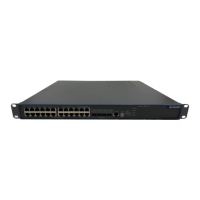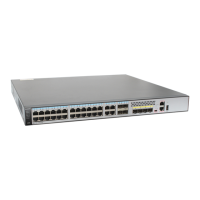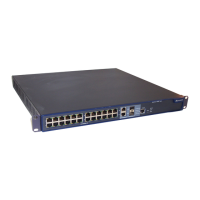Operation Manual - Getting Started
Quidway S5000 Series Ethernet Switches Chapter 4 User Interface Configuration
4-7
By default, terminal authentication is not required for users log in via the Console port,
whereas the password is required for authenticating the Modem and Telnet users when
they log in.
1) Perform local password authentication to the user interface
Using authentication-mode password command, you can perform local password
authentication. That is, you need use the command below to configure a login
password in order to login successfully.
Perform the following configuration in user interface view.
Table 4-14 Configure the local authentication password
Operation Command
Configure the local authentication password
set authentication password { cipher | simple
}
password
Remove the local authentication password
undo set authentication password
# Configure for password authentication when a user logs in through a VTY 0 user
interface and set the password to huawei.
[Quidway] user-interface vty 0
[Quidway-ui-vty0] authentication-mode password
[Quidway-ui-vty0] set authentication password simple huawei
2) Perform local or remote authentication of username and password to the user
interface
Using authentication-mode scheme command, you can perform local or remote
authentication of username and password. The type of the authentication depends on
your configuration. For detailed information, see “Security” section.
In the following example, local username and password authentication are configured.
# Perform username and password authentication when a user logs in through VTY 0
user interface and set the username and password to zbr and huawei respectively.
[Quidway-ui-vty0] authentication-mode scheme
[Quidway-ui-vty0] quit
[Quidway] local-user zbr
[Quidway-luser-zbr] password simple huawei
[Quidway-luser-zbr] service-type telnet
3) No authentication
[Quidway-ui-vty0] authentication-mode none

